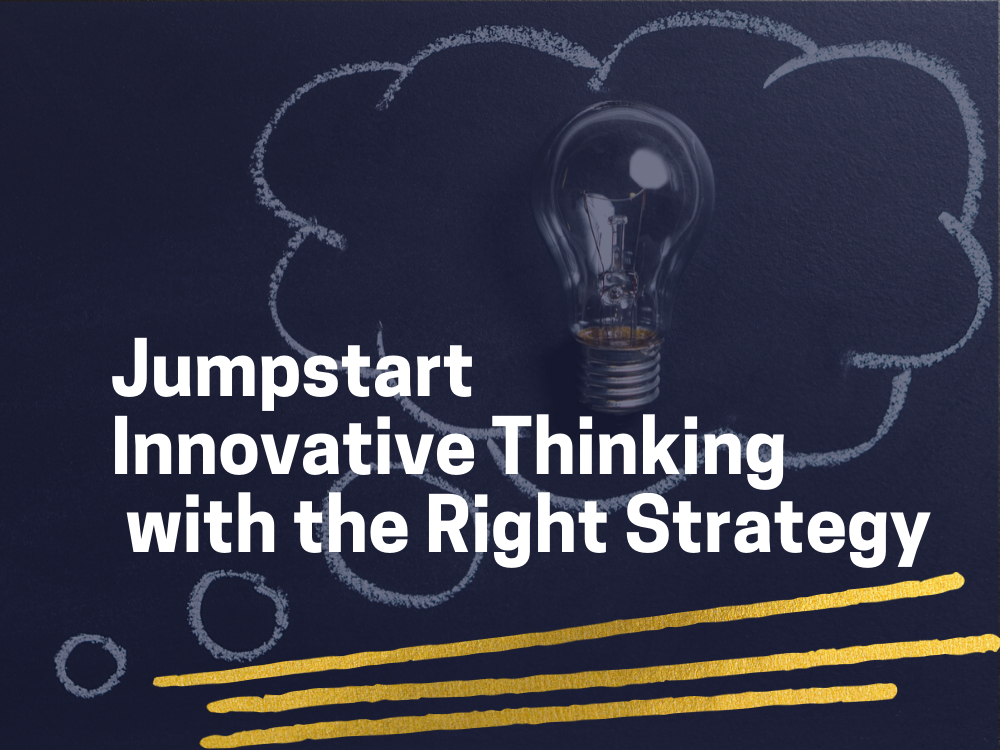This year’s predictions boast improved technical capabilities and greater access to software solutions that are shaping the future of innovation management. All trends point to the fact that the best way to benefit from the changes ahead is to prepare your employees now. This means creating leaders across all levels of your organization that are capable of innovative thinking, and the technology available makes this easier than ever before. The need for innovation is constantly looming in the background, but successful ideation is required for any action to take place. Innovative thinking does not always happen naturally and sometimes needs a push. Just like any other aspect of innovation, creating a strategy and using the necessary tools to drive the results you are looking for is very important.
Set Appropriate Expectations for Innovation
To motivate and inspire employees, it is important to hit the innovation sweet spot. This means providing a challenge and setting expectations that are an appropriate level for both you and your staff. Boredom is the enemy of innovative thinking. If a team is not challenged by a problem, then they are not likely to think of innovative solutions. However, if a problem is too challenging, the team will be too overwhelmed and stressed for true creativity to happen. The challenge presented should match the skills and resources at hand needed to effectively find a solution. Clear expectations help drive strategy by guiding employees in the direction you want. So your expectations should likewise give everyone a challenging push without being completely unrealistic. Afterall, you want these expectations to be achieved.
Proper Employee Education and Training
One of the most important aspects of your strategy should be to provide employees with the right resources, education, and training to tackle innovation on their own. For example, you can explain the best techniques to spark idea generation to help employees strengthen their ideation process. Training employees in design thinking is another helpful strategy. These processes are helpful tools that spark creativity and innovative thinking. It is important to educate employees on how to spot innovation opportunities and how to brainstorm effective ideas. This provides the confidence to naturally think innovatively during everyday processes without being prompted by a leader or coworker.
Practice Leads to Routine
Even with appropriate challenges and the right resources, innovative thinking takes practice. Your strategy should encourage finding new ways to do normal tasks whenever possible to get in the habit of innovative thinking. This makes everyday innovation a routine process that will happen naturally with practice. Regularly engaging in innovative thinking will help when new tasks and challenges arise that need a solution. With education and training, practice in the workplace will inspire future innovative thinking.
Step Away and Unplug
Overthinking a problem or feeling stressed will work against finding creative solutions. Sometimes it is best to step away and unplug from the problem at hand in order to inspire innovative thinking. It is important to allow for this in your strategy and to let employees know that it is sometimes a necessary part of the process and not a failure. Do you frequently think of great ideas in the shower or while driving? Often the brain is most creative when not focusing on a specific problem. Once you have a situation clearly defined, try leaving it be and doing something else to spark ideas. If you are feeling overwhelmed, step away from the problem and do something relaxing. These healthy practices should become a part of your innovative routine when necessary.
Innovation should become a regular aspect of every process and project across the organization. The goal of innovative thinking is to produce valuable ideas that are new or that will enhance and improve pre-existing products, services, and processes in the business. Having a strategy in place to cultivate these ideas and inspire employees is an important step toward successful innovation. However, the most important part of this process is making sure that ideas are recorded and not lost. It is critical that you have a system of record in place to collect, discover, evaluate, and develop ideas.
To learn more about the Planbox Agile Innovation Management platform, click here.
Sources:
- https://cmo.adobe.com/articles/2018/6/5-ways-to-inspire-innovative-thinking.html#gs.w7y9rm
- https://www.forbes.com/sites/bryancollinseurope/2018/06/25/innovative-thinking/#3a474eb27b88
- https://www.fastcompany.com/3056718/3-strategies-for-making-innovation-thinking-routine
- https://executiveeducation.wharton.upenn.edu/thought-leadership/wharton-at-work/2017/10/innovative-thinking-using-neuroscience/
- https://www.northeastern.edu/graduate/blog/innovation-methods/

